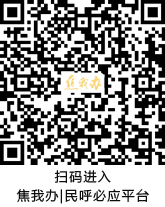
時政要聞
Editor's note: Confirmed by historic documents, archaeological excavations and oracle bone inscriptions as the capital site of the late Shang Dynasty (1600-1046 BC), Yinxu or the Yin Ruins is usually regarded as the cornerstone of the project on tracing the origins of Chinese civilization launched by China in 2001. As a key component of world civilization, it has provided solid evidence for the continuity and pluralistic and integrated pattern of Chinese civilization, bringing recorded Chinese history nearly 1,000 years earlier than previously believed. Starting on October 25, we are launching a series of videos about Yinxu to help you gain a deeper understanding of it. Here is the third episode: Hou Mu Wu Ding - The Largest Bronze Vessel Excavated in China.
編者按:作為中國曆史上第一個有文獻記載並為考古發掘與甲骨文所證實的都城遺址,殷墟是中華文明探源工程的原點和基石,是中華文明連續不斷、多元一體的重要實證,也是世界文明史中重要一環。殷墟及甲骨文的重大發現把中國信史向前推進了近千年,同時,因其具有全球突出普遍價值而被列入《世界遺產名錄》。為更好講述中國故事、讓世界讀懂中國,10月25日起,河南國際傳播中心、大河網聯合殷墟景區共同推出“走進殷墟”雙語係列報道。今日推出第三期:《後母戊鼎:青銅器裏的終極大BOSS》。
The bronze vessels of Yinxu are the pinnacle of bronze development in China and even in the world. Between 1928 and 1986, archaeologists excavated over 3,560 bronze vessels and weapons at Yinxu. The world-renowned Hou Mu Wu Ding (also known as Si Mu Wu Ding, a sacrificial vessel crafted as a burial tribute), which weighs 875 kg, is not only dignified in form, but also elegant in ornamentation, with complex craftsmanship. lt is the crowning glory of ancient bronze vessels in the world.
殷墟青銅器在中國乃至世界青銅器發展史上都是一個高峰。據統計,1928年至1986年間,僅正式考古發掘出土的青銅禮器、兵器就達3560件以上。 舉世聞名的後母戊鼎(又稱司母戊鼎),不僅造型莊重威嚴、紋飾華美典雅、冶鑄工藝複雜,更以其875公斤的重量位居世界青銅器之冠。(趙漢青 楊佳欣)
 |
 |
 |
|
||||
| 焦作網免責聲明: | ||||||||
|
||||||||
Editor's note: Confirmed by historic documents, archaeological excavations and oracle bone inscriptions as the capital site of the late Shang Dynasty (1600-1046 BC), Yinxu or the Yin Ruins is usually regarded as the cornerstone of the project on tracing the origins of Chinese civilization launched by China in 2001. As a key component of world civilization, it has provided solid evidence for the continuity and pluralistic and integrated pattern of Chinese civilization, bringing recorded Chinese history nearly 1,000 years earlier than previously believed. Starting on October 25, we are launching a series of videos about Yinxu to help you gain a deeper understanding of it. Here is the third episode: Hou Mu Wu Ding - The Largest Bronze Vessel Excavated in China.
編者按:作為中國曆史上第一個有文獻記載並為考古發掘與甲骨文所證實的都城遺址,殷墟是中華文明探源工程的原點和基石,是中華文明連續不斷、多元一體的重要實證,也是世界文明史中重要一環。殷墟及甲骨文的重大發現把中國信史向前推進了近千年,同時,因其具有全球突出普遍價值而被列入《世界遺產名錄》。為更好講述中國故事、讓世界讀懂中國,10月25日起,河南國際傳播中心、大河網聯合殷墟景區共同推出“走進殷墟”雙語係列報道。今日推出第三期:《後母戊鼎:青銅器裏的終極大BOSS》。
The bronze vessels of Yinxu are the pinnacle of bronze development in China and even in the world. Between 1928 and 1986, archaeologists excavated over 3,560 bronze vessels and weapons at Yinxu. The world-renowned Hou Mu Wu Ding (also known as Si Mu Wu Ding, a sacrificial vessel crafted as a burial tribute), which weighs 875 kg, is not only dignified in form, but also elegant in ornamentation, with complex craftsmanship. lt is the crowning glory of ancient bronze vessels in the world.
殷墟青銅器在中國乃至世界青銅器發展史上都是一個高峰。據統計,1928年至1986年間,僅正式考古發掘出土的青銅禮器、兵器就達3560件以上。 舉世聞名的後母戊鼎(又稱司母戊鼎),不僅造型莊重威嚴、紋飾華美典雅、冶鑄工藝複雜,更以其875公斤的重量位居世界青銅器之冠。(趙漢青 楊佳欣)
|
||||
| 焦作網免責聲明: | ||||||||
|
||||||||
|
|